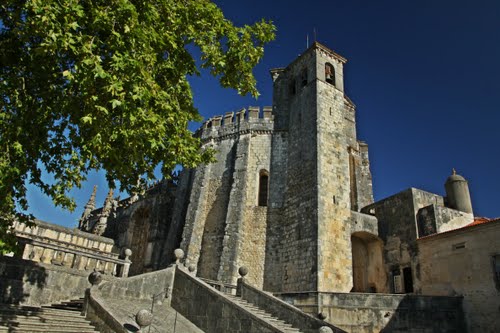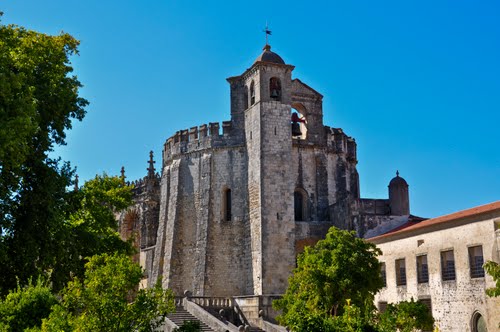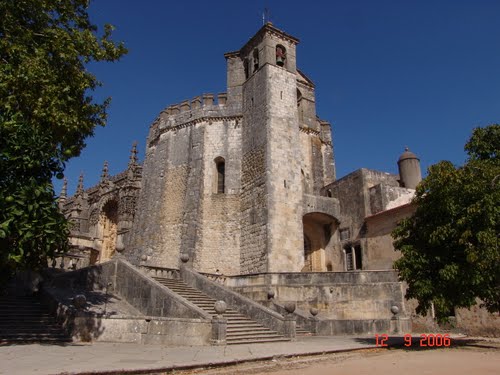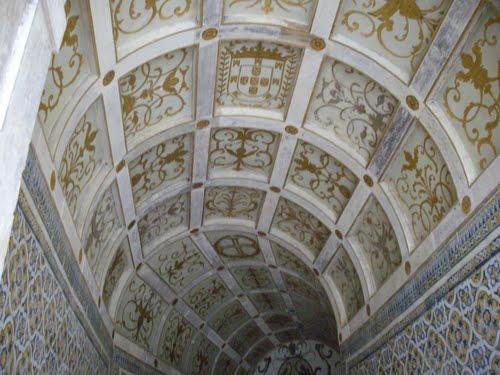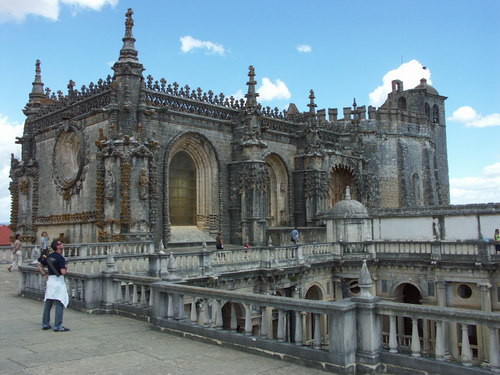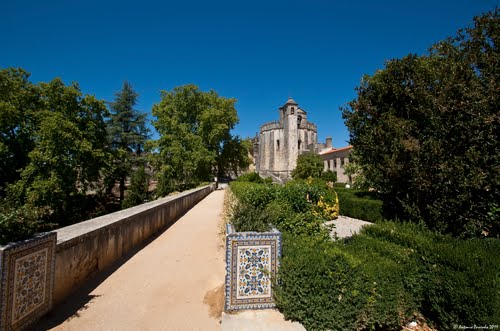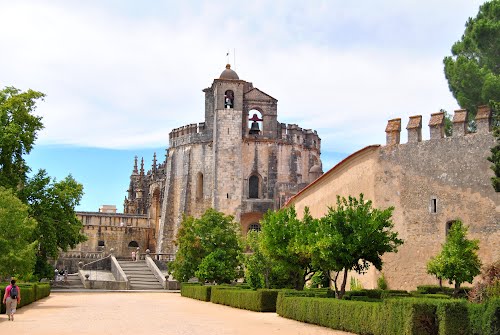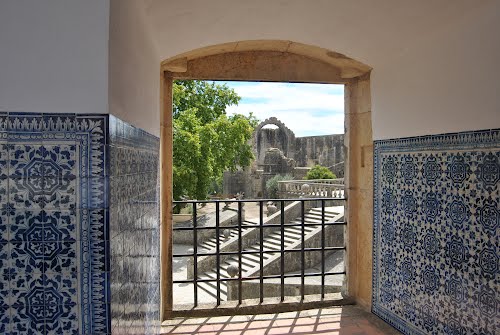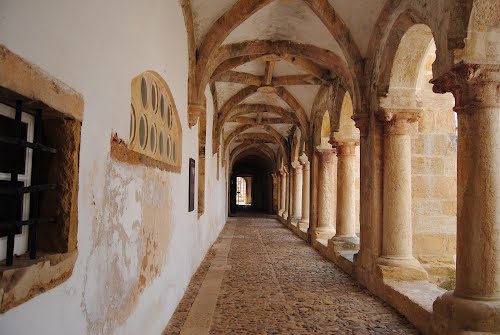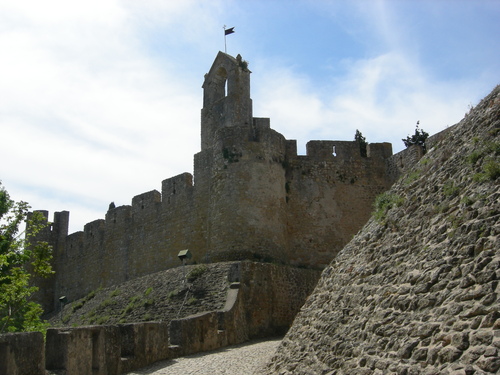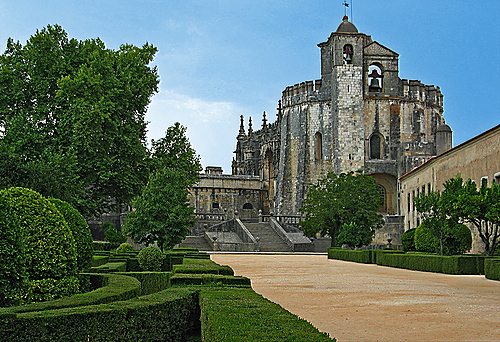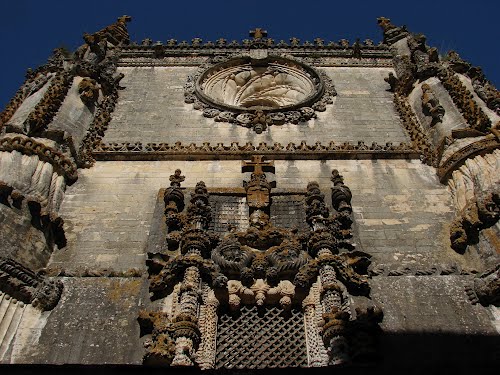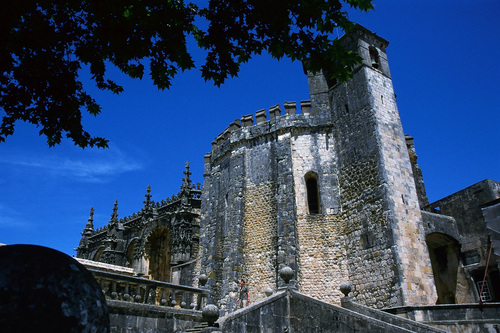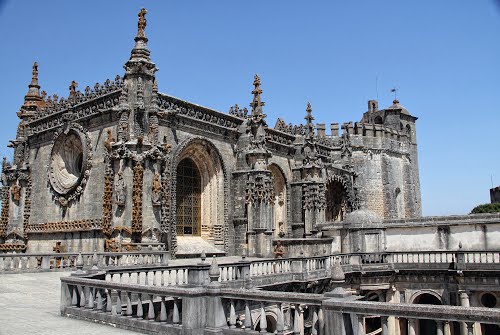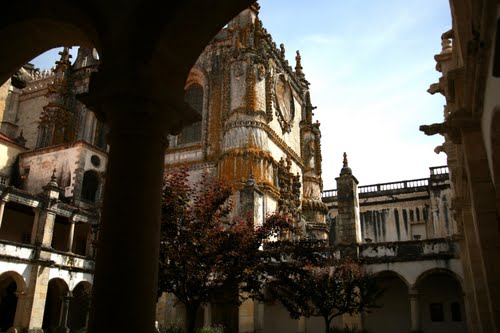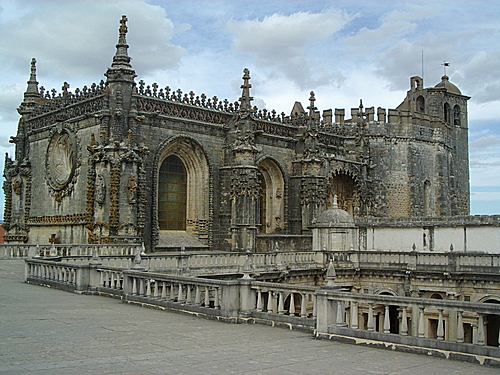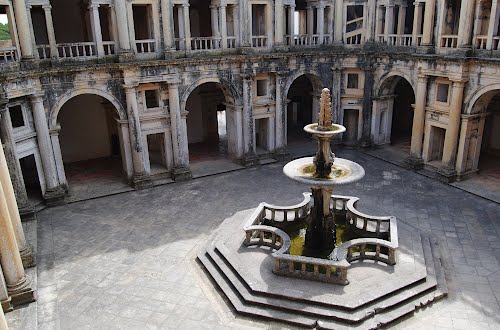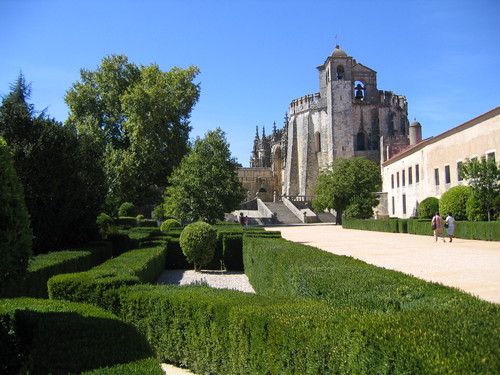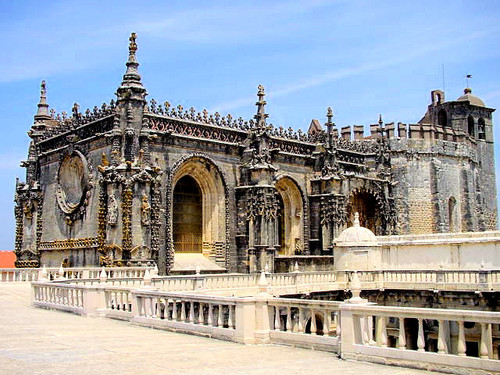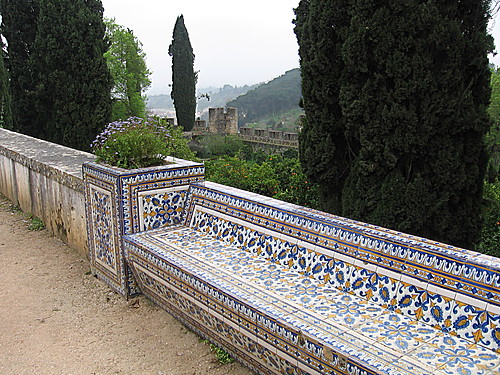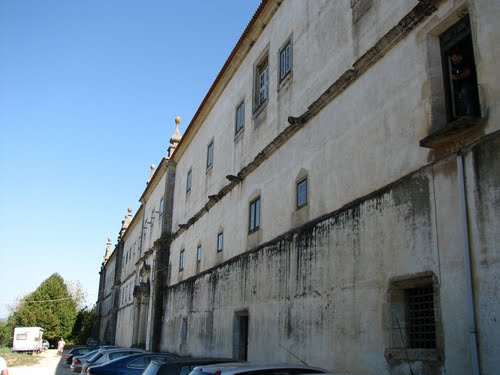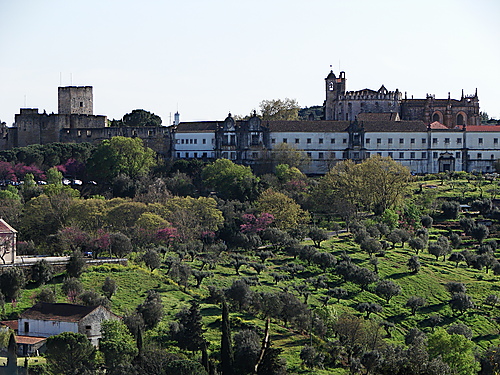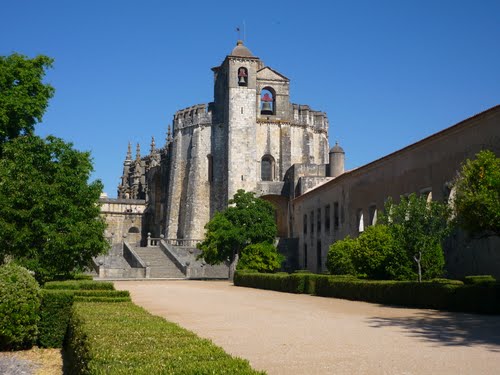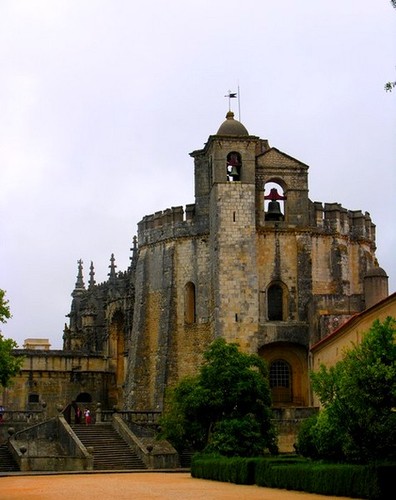The Convent of Christ (Portuguese: Convento de Cristo/Mosteiro de Cristo) is a former Roman Catholic convent/monastery in the civil parish of Tomare Santa Maria dos Olivais, in the Centrol region municipality of Tomar. Originally a 12th-century Templar stronghold, when the order was dissolved in the 14th century the Portuguese branch was turned into the Knights of the Order of Christ, that later supported Portugal's maritime discoveries of the 15th century. The Convent and Castle complex is a historic and cultural monument which was listed in the list of UNESCO World Heritage list in 1983.
History
Templars
The convent was founded by the Order of Poor Knights of the Temple (or Templar Knights) in 1118. Its construction continued until the final part of the 12th century with the construction of the oratory, in one of the angles of the castle, completed by the Grand Master D. Gualdim Pais (sometime around 1160). Around 1190 it was encircled and resisted the armies of caliph Abu Yusuf al-Mansur who was successful in taking strongholds in the south. (A plaque was erected near the entrance to the castle to commemorate this event).
During the second quarter of the 13th century, Tomar was transferred into the control of the Templars, becoming its seat. The castle became an integral part of the defence system created by the Templars to secure the border of the young Christian Kingdom against the Moors, which at the time occupied the area to approximately the Tagus River. But, following the dissolution of the Templar Order, on 14 March 1319, and following the request of King Denis of Portugal, Pope John XXII instituted the Order of Christ. The seat of the former Knights Templar was converted in 1357 into the seat of this new order.
The famous round church (rotunda) of the castle of Tomar was also built in the second half of the 12th century. The church, like some other templar churches throughout Europe, was modelled after the Dome of the Rock in Jerusalem, which was believed by the crusaders to be a remnant of the Temple of Solomon. The Church of the Holy Sepulchre of Jerusalem may also have served as model.
Order of Christ
Following the dissolution of the Templar Order, on 14 March 1319 (following the request of King Denis of Portugal), Pope John XXII instituted the Order of Christ. The Templar order had been suppressed during most of Europe from 1312–1314, but in Portugal its members, assets, and partly its membership were transferred to the Order of Christ. The seat of the former Knights Templar was converted in 1357 into the seat of this new order. As a result, at about the first half of the 15th century, work was completed to adapt the Templar oratory, introducing an open choir to the western niche, about half-way up the wall. What remains of this adaptation was the colonnade frame with interior arch. At the same time the main palace was constructed.
During the internship of Prince Henry the Navigator as its leader (1417-1450), the Order of Christ initiated the construction of two cloisters under the direction of master Fernao Gonçalves: the Claustro do Cemiterio (Cemetery Cloister) and Claustro das Lavagens (Washing Cloister). Prior to these large works, Henry began work on constructing the Chapel of Sao Jorge sometime in 1426 and was responsible for urban improvements in the town of Tomar.
In 1484, King D. Manuel (who became Master of the Order in 1484 and King of Portugal in 1492) ordered the construction of a sacristy (today the Hall of Passage), that connected the choir to the Chapel of Sao Jorge, linking the choir with the wall of the stronghouse. By the end of the century, the convent's General Chapter, decided to expand the convent (sometime around 1492), with 3,500 reis being spent on the public works in 1499: the chapterhouse, main altar, ironworks for the niche/archway, paintings and sculptures (for the same) and the choir were all expanded or remodelled.
A new meeting of the Chapter to reform the Order, ordered by the King 1503, expropriated the old Vila de Dentro, within the walls and closed the Sun Gate and Almedina Gate. On 11 October 1504, Francisco Lopes was nominated as masterbuilder for the project, by King John III, receiving 8000 reis annually and 120 reis for meals. By 1506, D. Manuel decided to order the construction of the church's nave.
The successor of Manuel I, King John III, demilitarised the order, turning it into a more religious order with a rule based on that of Bernard of Clairvaux. He also ordered the construction of a new cloister in 1557, which is one of the best examples of Renaissance architecture in Portugal.
In 1581, after a succession crisis, the Portuguese Nobility gathered in the Convent of Christ in Tomar and officially recognised Philip II of Spain (Philip I of Portugal) as King. This is the beginning of the Iberian Union (1581–1640), during which the Crowns of Portugal and Spain were united in a dynastic union. The aqueduct of the Convent was built during this period.




